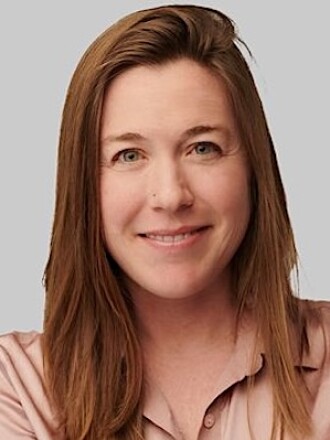In Brief:
- A series of damaging floods in recent months has brought financial hardship to local governments.
- Scientists are developing new maps and tools that allow insurers to cover entire areas for disasters such as flooding, rather than coverage for specific buildings.
- A Bay Area city is among the first to buy this form of insurance, which is driven by insights from artificial intelligence.
Sitting high and dry on a hill, the police complex in Fremont, Calif., was the one municipal facility with flood insurance. This was because the hill was technically in a flood plain and the building served as collateral for a bond.
Steven Schwarz, Fremont’s risk manager, found this frustrating. “I have to insure a building for flood that's never going to be flooded, whereas I’ve got other places in the city that potentially could be flooded,” he says.
When Schwarz brought this up in a conversation with his insurance broker, the broker introduced him to another option: A policy that could protect the city in the event of flooding anywhere in Fremont’s entire geographical area.
The policy would make payouts based on predetermined parameters (namely, trigger events), rather than damage to a specific building or piece of city infrastructure. This concept was first put forward back in the 1940s, says Alex Kaplan, executive vice president for alternative risk at Amwins, an insurance broker, but a strong market didn’t really develop until the 1990s.
Fremont already had this kind of coverage for earthquakes, so it was easy for Schwarz to see how it could make sense for floods. It’s hard to predict exactly where the damage from any natural disaster will be greatest. “If you can draw a circle around a geographical area, and cover that whole area, it gives you the greatest bang for your buck,” Schwarz says.
Floods are the most common and costly natural disaster, but difficult to predict with accuracy. Artificial intelligence has played a significant role in giving insurers the data they needed to design a parametric flood policy that could make sense on both sides.
Fremont, which has not had a history of high flood risk, was one of the first jurisdictions to obtain this kind of coverage. As changing weather patterns make it harder for communities to assume they are safe from damaging floods, others could follow.
How These Policies Work
Kaplan worked in the federal government as an adviser to the Treasury secretary before turning to insurance. In this new role, he focused on uninsured risk among state, local and federal governments and the ways parametric policies could reduce it.
A parametric policy pays out when an event meets a specific parameter, such as wind speed or earthquake magnitude. Payouts for trigger events are predetermined, not subject to post-event assessment by an adjuster.
Cases are usually paid and closed within 30 days, Kaplan says. The government policyholder is free to use the funds it receives in any way it likes. Payouts are fixed; there’s no door open for litigation from policyholders who think they deserve more.
Parametric policies almost always complement traditional property coverage, Kaplan says. A 10 percent deductible could mean a big coverage gap for assets worth tens of millions of dollars. A parametric payout could help fund the deductible.
A warmer atmosphere means bigger rainstorms, but it’s not the only factor that affects how water moves through a community. AI can help planners and insurers better understand what might happen at the local level, drawing on a range of current and historical data.

(Daniel Mears/TNS)
Closing Coverage Gaps
The total economic cost of disasters is going up at a faster rate than the share of risk that is covered by insurance, Kaplan says. It falls on the public sector to cover much of this protection gap.
Local governments’ exposure goes beyond the buildings that they own. “If the police station goes down, if City Hall goes down, that’s not good,” Kaplan says. “But those things are not the economic drivers of the community.”
A disaster can mean the loss of property tax, business tax, sales taxes and other income streams that fuel city operations and fund both recovery and future obligations. Kaplan points to the aftermath of the 2017 Tubbs Fire in Northern California as an example of what this might mean.
“Santa Rosa had to take out an uncollateralized loan from the state just to fund their debt service on existing debt,” he says. “Effectively, they had to mortgage their mortgage.”
Water Where It’s Not Supposed to Be
Beth Tellman saw the consequences of flood events firsthand during years of flood relief and resilience work in El Salvador. She built a platform to assist disaster efforts there by monitoring flooding in real time while a graduate student at Yale.
As co-founder and chief scientist at Floodbase, a technology company providing flood insight to governments and parametric insurance providers, she oversees the ongoing development of the tool she created. She’s using AI to synthesize information from sources including satellite observations, stream gauges and ground-based sensors, and integrating it with hydrologic models and rainfall data.
The picture that results also includes flood-related economic loss and business interruption at the community level. Insurers are using this information to develop and price new types of insurance products, she says. (The Federal Emergency Management Agency and NASA have also turned to Floodbase during developing events, Kaplan says.)

Past estimates have been more piecemeal, specific to a factor such as storm surge, river flooding or rainfall total. Where the water came from, or how it got there, aren’t the main concerns for an insurer. “We just care about the fact that there’s water where it’s not supposed to be,” Kaplan says.
Satellites capture things that affect flooding that numbers alone don’t, says Tellman, such as changes in infrastructure or random events such as a tree blocking a culvert. “There are many other reasons for possible underprediction,” she says.
Tellman’s team isn’t attempting the long-term projections that national and international climate assessment projects take years to develop. Instead, they draw on a continuous data record that stretches across 40 years to improve understanding of present flood behavior and how it is changing.
For insurers and emergency managers alike, up-to-date insight is vital. Reports have emerged that the Federal Emergency Management Agency flood plain map for the area where tragic events in the Texas Hill Country recently unfolded was based on rainfall data from the 1970s.

(Pedro Portal/TNS)
Exposure Matters
An AI-assisted simulation of a 1998 flood event in Fremont helped Schwarz see how a parametric policy could benefit his city. The new policy meets his obligation to cover the police complex but expands the coverage to 100 square miles. “It gives us an opportunity where we’re paying for something that might actually pay back to us,” he says.
Parametric insurance against flood risk is relatively new. In a community where flooding has been a consistent problem, the cost could be expected to reflect that risk.
Climate change may be driving the frequency of damaging floods, but Kaplan doesn’t think it’s the main driver of economic loss. This is primarily driven by exposure, he says. For example, the area hit badly by Hurricane Ian had seen long-term population growth at a rate almost 10 times greater than the rest of the country.
“The reality is that people like to live and work where the topography is interesting, and that happens to be the most disaster-prone areas around the globe,” he says.









